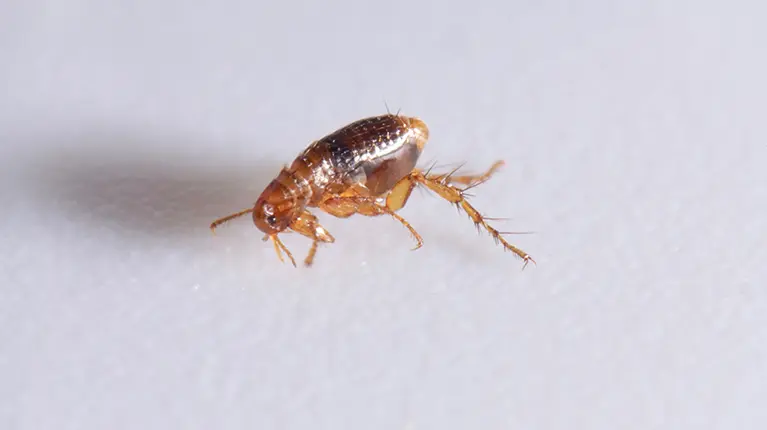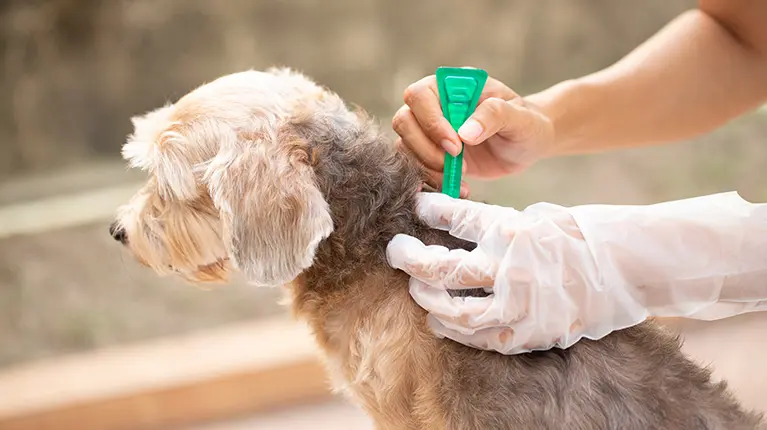Flea disinfestation

Need to have a flea disinfestation done? Contact Truly Nolen for effective pest control and treatment.
Fleas are parasites that feed on the blood of cats, dogs, rodents, birds and humans.
Flea disinfestation? It's time to call Truly Nolen!
Once inside the dwelling, they are capable of spreading to garments such as pants, blankets and bedding, carpets and furniture. So even if your pet is properly groomed and dewormed, it is possible that they may need a more thorough flea disinfestation.

How to know if you need a flea disinfestation
Do you feel itchy and notice redness on your skin? Is your dog or cat scratching all the time, to the point of wounding? A flea infestation is probably the last thing you want.
Start by checking your pet's bedding. Detecting and treating the problem early on can avoid complex interventions and a professional flea disinfestation.
That's why it's important not to ignore the source of the biting and itching. Fleas jump and attach themselves to fur, clothing or animals. Their bite can transmit typhus, bubonic plague, tapeworm and various bacterial infections. It can also cause discomfort, pain, anemia, and in some cases allergic dermatitis.
If you want to put an end to this nuisance and avoid a health problem, contact us! Truly Nolen cares for your health by performing flea disinfestation in any type of space.
How to act after a flea disinfestation
To prevent fleas from returning, follow these steps:
- Thoroughly clean and vacuum all areas of the house to remove fleas and prevent them from laying more eggs.
- Wash all textiles that have been in contact with the animals. After washing, wrap the clothing inside a plastic bag for 12 hours to kill the fleas.
- Bathe all pets and, if possible, shear their fur. Treat all animals with appropriate products.
- Keep green areas around the house mowed and well-tended to discourage rodents.
- Thoroughly inspect second-hand furniture, clothing, and packaging.
Some tips for identifying a flea
Fleas are small insects that have shiny dark brown skin and a hard, wingless body. They feed by sucking the blood of animals, especially mammals and birds.
Their hind legs are longer, used to propel them leaps over relatively large distances - a flea can jump up to 200 times its height.
An adult female flea can lay up to 20 eggs per day. When the larva matures, it remains in the cocoon until it senses vibration or pressure. At that point, it hatches and jumps to its new host.
The flea (Siphonaptera) has several species that parasitize specific groups of animals. Thus, fleas that attack cats are different from those that attack dogs and may require different treatment.
How do fleas appear?
Usually, fleas enter the home carried in by pets. If your cat or dog is always scratching, it is likely to have fleas. Take him or her to the veterinarian for proper professional treatment.
If your home has been targeted by mice or other rodents, it is likely that they are the ones who introduced the fleas.
On the other hand, fleas can jump onto people's legs when they walk anywhere without them realizing it, and thus be carried into the home.
Does your home need a flea disinfestation? Contact us!
Learn more about all of our disinfestation services.